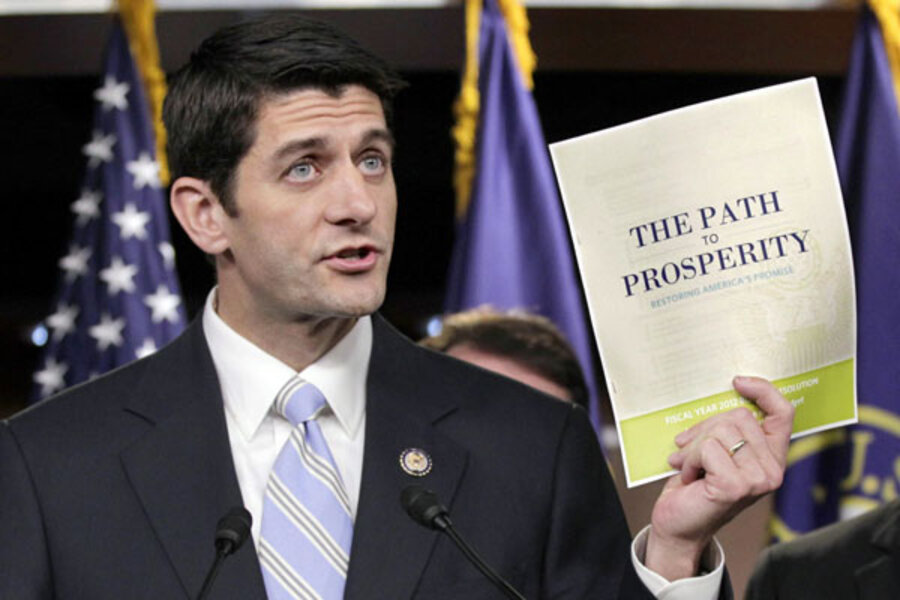The other Paul Ryan plan: $800 billion in cuts to Medicaid
Loading...
| WASHINGTON
There's another Paul Ryan plan for health care, a fundamental change in caring for the poor and disabled that would affect many more people than the Medicare overhaul the GOP vice presidential candidate is best known for.
Under the Wisconsin congressman's Medicaid plan, states would take over the program. At the same time,Ryan's budget would reduce projected federal spending on Medicaid by about $800 billion over 10 years, dramatically shrinking it as a share of the national economy.
Medicaid serves about 60 million people, roughly 10 million more than Medicare. It's a diverse population brought together by need. Most Medicaid recipients are low-income children and their mothers, but the costliest cases are severely disabled people, many of them seniors in nursing homes.
Ryan would also repeal President Barack Obama's health care law, expected to add at least 11 million more people to Medicaid.
Ryan's Medicaid plan is in sync with his new boss, Republican presidential candidate Mitt Romney.
"Gov. Romney ... believes that states are far better positioned to design programs that effectively serve those in need," said campaign spokeswoman Andrea Saul.
But no matter who runs Medicaid, such cuts would result in millions of vulnerable people losing health insurance, according to advocates for the poor and some nonpartisan economic analysts.
"Medicaid is already a very lean program," said Edwin Park of the Center on Budget and Policy Priorities, which advocates for low-income people. "It is not a program where you can magically glean huge efficiencies by just devolving it to the states. The only way to compensate for funding reductions of this magnitude would be to institute deep, damaging cuts to beneficiaries and the health care providers who serve them."
Bring it on, says Wisconsin Health Secretary Dennis Smith, who oversees Medicaid in Ryan's home state. Smith, who works for Republican Gov. Scott Walker, says states can cut costs without gutting services by running Medicaid more efficiently.
"Everybody agrees that there is excess cost in the health care system, so by golly, give us the flexibility to address it, and we will," said Smith. "We can serve the people on Medicaid with the adjustments the Ryanbudget. We can make that work."
For example, Wisconsin is now charging some low-income adults a modest monthly premium for Medicaid, tapping a new funding source to pay for valuable benefits, Smith said. And the state is looking for ways to help frail elderly people keep living at home, avoiding the costly alternative of a nursing home.
Growing enrollment has turned Medicaid into a big share of state budgets, and since Washington sets many of the rules, the program is a source of constant tension between federal and state governments. On average, the federal government pays about 60 percent of Medicaid costs, and states cover the rest. The Supreme Court recently gave some latitude to states chafing at Obama's health care law, saying they are free to opt out of its Medicaid expansion.
Obama has largely shielded Medicaid from cuts in budget negotiations with Congress. But his administration has proposed new ways to allocate funding that could be used to dial back the federal share.
Ryan's plan goes beyond tweaking. It would essentially rip up the Medicaid manual and start all over again. States would get a lump sum from Washington, a "block grant" indexed to reflect population growth and inflation. The idea has governors split along party lines.
Ryan's Medicare plan, shifting future retirees to private insurance, would phase in over a decade or more. The Medicaid changes would come much more rapidly. The proposal has not been fleshed out, leaving many unanswered questions. For example:
—What happens if a state's economy tanks?
Under current law, the federal Medicaid share is pegged to program enrollment, not population growth, said John Holahan, director of the Health Policy Center at the nonpartisan Urban Institute. That means federal funding increases when the Medicaid rolls swell. But under Ryan's plan, "there are no provisions to automatically deal with recessions," said Holahan. "The demand for Medicaid goes up at the same time state revenue is going down."
—Would low-income and disabled people still have a legal right to coverage?
Converting Medicaid into a block grant would end the current right to coverage under federal law, and it remains unclear what rights could be preserved. Most analysts say states would insist on the flexibility to reduce their Medicaid rolls. The Urban Institute estimates that between 14 million and 27 million people would lose coverage because of Ryan's spending restrictions.
—What sorts of safeguards would remain in place for seniors in need of nursing home care?
Although frail elderly people must spend down most of their savings before they can qualify for Medicaid, a federal law shields spouses from becoming impoverished. It's unclear what would take its place.
Supporters of state control say governors and legislatures are closer to the people and would not harm their own constituents.
Back in Ryan's state, the jury is still out.
Medicaid covers nearly 1 in 5 Wisconsin residents, and hospitals have a major stake in the outcome. Joanne Alig, senior vice president for policy with the Wisconsin Hospital Association, says they would need to know more about the plan to reach conclusions.
"While I think we are supportive of looking at alternatives to the Medicaid status quo, the devil's in the details," she said.







